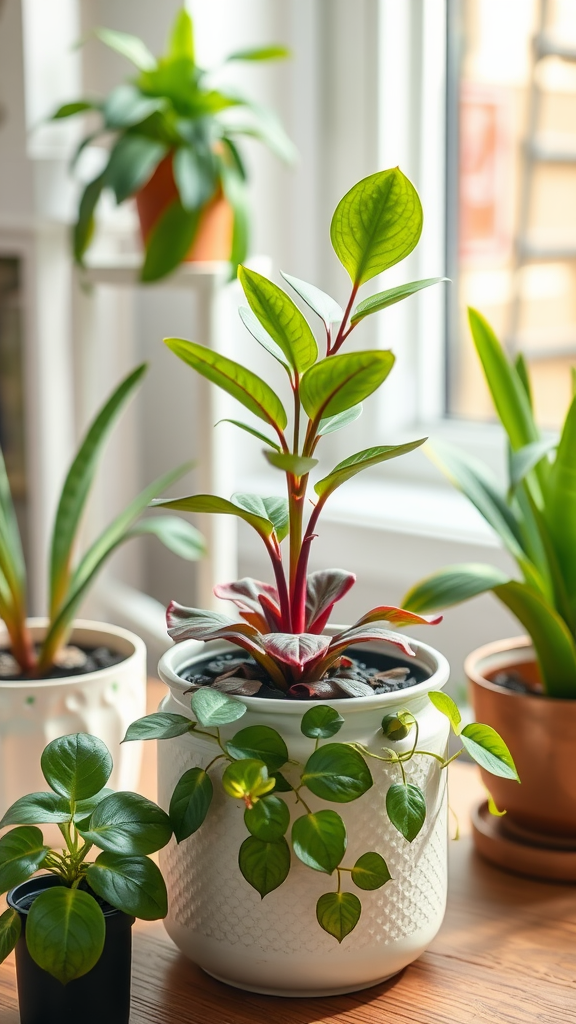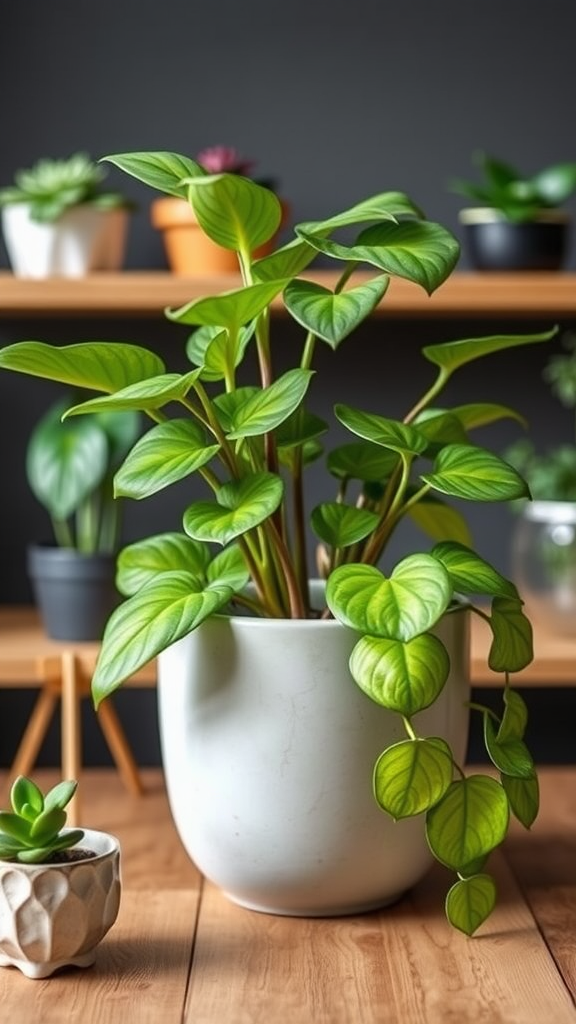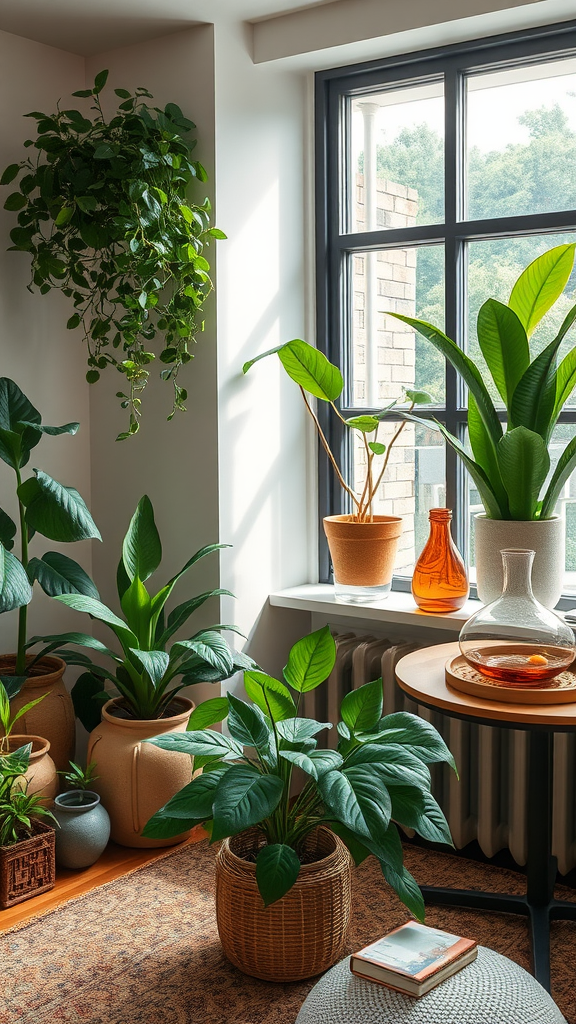Step-by-Step Guide on How to Propagate Your Favorite Houseplants
Are you looking to expand your indoor jungle? Propagating your favorite houseplants can be both rewarding and enjoyable. Here’s a simple, step-by-step guide to get you started on this green journey. You’ll not only save money but also create lovely gifts for friends and family!
1. Choose Your Plant
First, think about which houseplant you want to propagate. Some popular choices include:
- Spider Plant
- Pothos
- Succulents
- Peace Lily
- Snake Plant
Each of these plants propagates differently, so knowing your plant will help you follow the right steps!
2. Gather Your Supplies
You’ll need a few essential items to get started. Here’s what you’ll require:
- Sharp scissors or pruners
- Water or a suitable potting mix
- Small containers or pots (if planting in soil)
- A clear plastic bag or a plastic wrap (for humidity)
3. Decide on the Propagation Method
Understanding the propagation method is crucial. Generally, there are three popular methods: water propagation, soil propagation, and leaf cuttings. Let’s break these down.
Water Propagation
This method works well for plants like Pothos and Spider Plants. Here’s how:
- Cut a healthy stem just below a node (where a leaf meets the stem).
- Place the cut end in a glass of water, ensuring the node is submerged.
- Put the glass in a warm spot with indirect sunlight.
- Change the water every few days to keep it fresh.
In about 2-4 weeks, roots will start to develop.
Soil Propagation
If you’re propagating a plant like a Snake Plant or Peace Lily, follow these steps:
- Take a clean container and fill it with potting mix.
- Make sure to cut a healthy leaf or stem.
- Plant the cut end in the soil, burying it about an inch deep.
- Water lightly but do not overwater. Cover it with a plastic bag to maintain humidity.
- Place in a warm area with indirect light.
Roots should begin to form in a few weeks.
Leaf Cuttings
Some plants, like succulents, propagate very well through leaf cuttings. Follow these steps:
- Choose a healthy leaf and remove it from the plant using clean scissors.
- Let the leaf dry out for a day or two to allow the cut end to callous.
- Once it’s dried, place it on top of the soil without burying it.
- Water lightly and keep the soil moist until roots develop.
4. Care for Your New Plants
Once you see roots forming, it’s time to take care of your new plants! Here are some tips:
- For water propagation, you can transfer the plant into soil once the roots are a few inches long.
- For soil propagation, keep the soil moist but not soggy.
- Be patient! Some plants can take longer to root than others.
- Monitor for signs of stress, such as yellowing leaves or stunted growth.
5. Transplanting Your New Plants
When your propagations are strong enough, it’s time to transplant them into their own pots:
- Choose a pot that is slightly larger than the root ball.
- Add fresh potting mix to the pot.
- Place the plant in the center and fill around it with soil.
- Water thoroughly and place it in a bright, indirect light location.
With patience and care, you’ll soon have thriving new houseplants! Remember, propagation is a journey. Each plant is different, and learning from your experiences will make you a better plant parent. Happy planting!
Common Mistakes to Avoid When Propagating Houseplants
Propagating houseplants can be a rewarding experience. However, many plant enthusiasts, whether beginners or seasoned gardeners, tend to make some common mistakes. By avoiding these pitfalls, you can increase your chances of success and ensure healthier plants in your home. Here are some essential tips to help you navigate the propagation process without stumbling into these traps.
Choosing the Wrong Time
Timing is everything when it comes to plant propagation. It’s best to propagate during the growing season, usually spring and summer, as plants are more active during this time. Attempting to propagate in winter can lead to poor results, as many plants enter a dormant state. Make a habit of checking your plant’s specific growth cycles to choose the best time for propagation.
Ignoring the Parent Plant’s Health
Before you take cuttings, inspect the health of the parent plant. A sick or stressed plant will not produce healthy offspring. Look for signs such as yellowing leaves, pests, or disease. Always select cuttings from a robust plant that looks lush and green. This increases the likelihood that your new plants will thrive.
Using the Wrong Tools
Using clean and sharp tools is crucial for successful propagation. Here are some recommended tools:
- Sharp scissors or shears
- Glass or plastic containers for rooting
- Pots with drainage holes for planting
- Rooting hormone (optional, but can be beneficial)
Ensure that all tools are sterilized to prevent disease transmission. Garden shears can carry diseases from one plant to another, so don’t skip this important step.
Improper Cutting Techniques
How you take a cutting can make a big difference. Use the following techniques for better results:
- Choose healthy stems with several nodes.
- Cut at a 45-degree angle to increase the surface area for root development.
- Make cuts a few inches long; shorter cuttings may not have enough energy to root.
Failing to follow these cutting techniques can lead to poor rooting and a weakened plant structure.
Overwatering
One of the most common mistakes in propagation is overwatering. While it’s essential to keep the soil or medium moist, you should avoid waterlogged conditions. Here’s how to manage watering:
- Use a well-draining soil mix or propagate in water.
- Check the moisture level before watering; it should be slightly damp, not soggy.
- Use your finger to test the soil; if it feels wet, wait another day before checking again.
Excess moisture can lead to rot, stunting your plant’s growth and reducing your chances of successful propagation.
Neglecting Humidity and Light
Houseplants thrive in specific humidity and light conditions. When propagating, it’s essential to mimic these conditions. Here’s what to do:
- Place your cuttings in a location with bright, indirect light.
- Maintain humidity levels; consider using a plastic bag or humidity dome to lock in moisture.
- Rotate the cuttings to ensure they receive even light exposure.
Failing to provide the right amount of light and humidity can hinder root growth and delay the propagation process.
Transplanting Too Soon
Once your cuttings develop roots, it’s tempting to move them to a larger pot too quickly. Be sure to wait until the roots are robust and firmly established. Transplanting too soon can shock the plant, making it hard for it to adapt. Here are some signs that your cutting is ready for transplanting:
- Visible roots at the bottom of the container or through the sides.
- New leaves or shoots emerging from the top.
- The plant feels stable when gently tugged.
Give your cuttings time to root fully, and they will be better prepared to thrive in their new environment.
Not Being Patient
Propagation is a process that requires patience. Roots may take several weeks to develop, and plants can take time to adjust to their new surroundings. Rushing the process can lead to stress for the plant, making success less likely. Be patient, and enjoy the journey of watching your new plants grow.
By steering clear of these common mistakes, you can enhance your plant propagation experience. Remember to choose the right tools, take healthy cuttings, manage light and water, and be patient. Happy propagating!
Conclusion
Successfully propagating your favorite houseplants can be a rewarding experience, allowing you to expand your indoor jungle while saving money. Following the step-by-step guide outlined earlier sets you on the right path. Whether you opted for method selection or mastering the art of cutting, patience and care are key. Remember to provide the ideal environment with proper lighting and water without overdoing it.
As you embark on this green thumb journey, keep in mind the common mistakes to avoid. Bypassing the necessary preparations, such as ensuring your tools are clean or neglecting the right soil type, can hinder your success. It’s equally vital to be aware of the right timing for propagation. Cuttings taken during the active growing season yield the best results.
Taking note of these errors will enhance your experience and promote healthier plants. Embrace each attempt as a learning opportunity, and don’t be disheartened by setbacks; even seasoned plant enthusiasts have faced challenges. By honing your skills and knowledge, you’ll foster a flourishing collection of houseplants that thrive in your home.
So, gather your supplies, choose your favorite plants, and start propagating today! With a little enthusiasm and these practical tips, you’ll soon find yourself surrounded by new green friends, each one a testament to your growing knowledge and passion for plant care. Happy planting!





